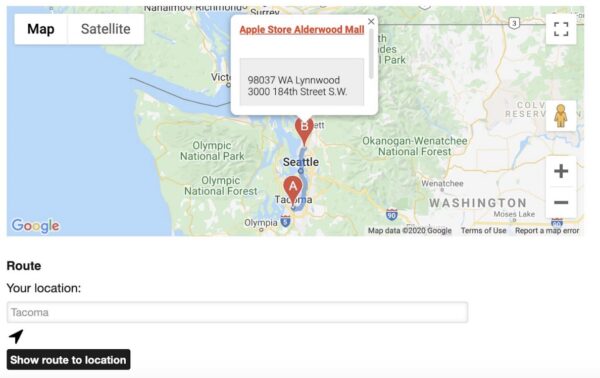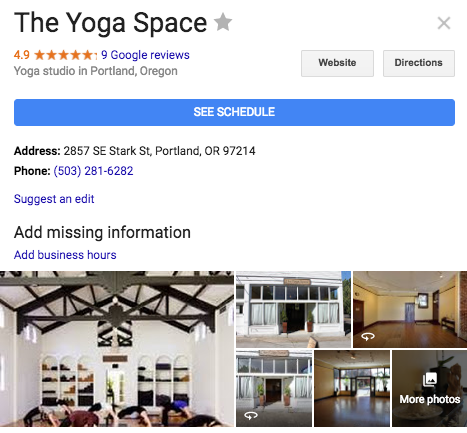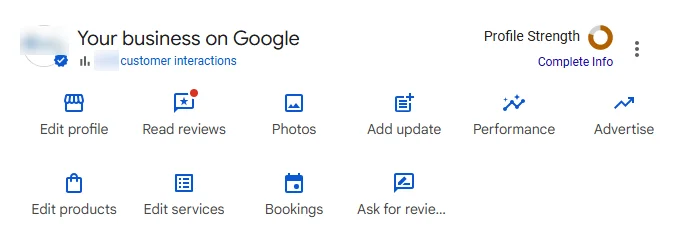Sports and fitness SEO is a really tough game. You’ll need to work hard to get those pages ranking (and keep them there). Plus, you probably need to think about how to turn those online users into customers. Luckily, you don’t need to be a tech expert to reach your sports and fitness SEO goals. Check out these five targeted tips to get your gym and fitness pages ranking!
Sports and fitness SEO: up your game!
For businesses like gyms that have a physical location and services, it can be hard to compete online. But it’s more important now than ever before to get your business in Google’s search results, if it isn’t there already.
In this post, we’ll discuss some hard-ball SEO tips for your sports and gym website. If you don’t already have a website, you can make one easily with WordPress. It’ll also help you to learn your SEO basics first, if you’re completely new to SEO. Otherwise, it’s time to limber up and get started!
1. Play to your strengths
SEO for sports and fitness is, on the whole, extremely competitive. After all, trying to compete with brands like Adidas and Nike, you have little chance of ranking high with search terms like ‘running shoes’. It’s not just sportswear brands — from big gym chains to online workouts, there are loads of existing fitness businesses fighting to get attention from internet users. However, by identifying your strengths and targeting your efforts, you can find ways to claim your share of the market:
• Find your niche and use long-tail keywords
Finding a niche means narrowing down the enormous category of sports and fitness, and focussing on the specific areas relevant to your business. So instead of focusing on simply ‘yoga’ or ‘weight training’, you’ll need to go a step or two further. The more ways you can find to describe your business differently from your competition, the better! You can use these differences to create long-tail keywords and identify the audiences who will be interested in what you offer.
Long-tail keywords are easier to rank for than single keywords and short keyphrases. They can help you connect with the right audiences better than more general keywords, too, because they’re more relevant and targeted. Choosing long-tail keywords to target is a lot like finding your niche, and you can use the results you find in either task to inspire you with the other.
Read more: Keyword research for SEO: the ultimate guide »
• Go for local SEO
Local SEO is similar to regular SEO, but it focuses on appearing in the search results for a particular region. You can use local SEO to target search results around a city or a state, for instance. Google can often tell when users are searching for products or services nearby. So if you have something to offer in a specific region, you want to be in those region-specific results!
Using local SEO techniques will help you to rank higher in the search results of users close to your business location(s). A major benefit of local SEO is its potential to drive local customers to your physical business (when circumstances allow it). Meanwhile, if you do ‘regular’ SEO and try to get visitors from all over the country, or world, you might find it difficult to bring that success back into your offline business. So unless you want to go completely online and abandon your offline activities forever, Local SEO is probably the best choice.
The Yoast Local SEO for WordPress plugin can help you with the technical aspects of local SEO. Use the plugin to add your most important information (things like the name of your business and what you do, your address and opening hours), and this will be automatically converted to code that Google can use to display information about your business in the search results. Whether you want to target one city, or multiple locations, the Local SEO plugin will help you to optimize for the relevant local results.
2. Get involved with online fitness communities
There are loads of online sports and fitness communities out there. And it’s not just ‘the running community’ or ‘the bodybuilding community’. There are often subcultures within these communities, and these can differ massively. For instance, there’s a big divide between those people who want to sculpt their perfect physique and people who just want to stay healthy and active. Age and gender can be a big factor, too. Think about the kind of people that fit in your niche, and try to find out which online communities they’re visiting so you can join them and spread the word about your business!
• Social media and online communities
When we talk about social media, we’re usually referring to Facebook, Twitter, Instagram, TikTok and so on. But that’s really the narrowest definition of social media. In many ways, you can think of social media as any site where user input and interaction form most of the content (if not all of it). So sites like Reddit and internet forums like Mumsnet count as social media too. These kinds of sites can offer you access to really specific audiences if you dig around and find the right ones for your niche. For instance, did you know there’s a vegan fitness community on Reddit?
If you can find existing communities online that you think will be interested in what you offer, try joining the group and letting people know what you offer. Let’s be clear — just dropping in a link to your website isn’t likely to be effective, and users may disregard it as spam. It will benefit you to interact regularly with these communities and explain in more detail what you offer and why. Try helping people in the community, for instance by answering their questions, before you start trying to promote your business. Keep an eye out for influencers in your groups, too; if you can get their support, it will be a lot easier to get interest from the others!
If you can’t find any suitable online communities to join, you can always create your own! Naturally, this is harder to do than joining an existing community, and it could take some time to build up the numbers. So it’s better to look for existing communities to join first.
Keep reading: Social media strategy: Where to begin? »
3. Make engaging, sharable content
Don’t fall into the trap of making content just to fill up your pages. You should always make content with real users in mind. And you should try to make it as engaging as possible! If you make really great content, people are more likely to share it — and the links they share can help to boost your Google rankings! As mentioned previously, there can be huge differences between different subcultures in sports and fitness. And that can have a big impact on what kind of content will work for you.
• Images and videos
To be competitive at SEO for sports and fitness, it’s really important to use visual media. Well-chosen images and videos can help show people what your company is all about! Aside from your brand imagery, you could include images on pages or blog posts to show what you’re talking about in the text. Another way to include images is to make a gallery page, so users can see even more of what’s available.
For example, if you have loads of high-tech equipment and extensive facilities, make sure you show these off. If you offer personal coaching, you probably want to show that human interaction with images or videos. And, if you are featuring people in your imagery or videos, think carefully about what kind of people your customers will relate to. Bear in mind, stock photos and videos probably won’t cut it. Online users want a taste of the real experience! Here’s a nice example from Lewis Paris Fitness:
There are lots of ways you could make engaging videos (and maybe get them ranking in Google, too). You could record a quick introduction about yourself, explaining what you do. Or you could create regular how-to guides or workouts and share these on YouTube. You could even record a (video) podcast talking about your sports and fitness philosophy.
Whatever you choose to do with your visuals, you need to make sure that you use the right kind of image formats, and add them to your site in the right way. (The same goes for video — and video backgrounds, which we don’t recommend using). Otherwise, your pages can get really slow. That’s not only bad for SEO, but also for the people trying to visit your site.
Read on: Image SEO: Optimizing images for search engines »
• Written content
Aside from the basic information about you and/or your company on your website, consider producing longer written content too, such as blog posts. This is a great way to show off your expertise! Plus it creates more opportunities to show up in the search results too, as each of your pages/posts should target different keywords.
As always, keep real users in mind while you’re writing, and give them something interesting, insightful or helpful to read. There are loads of ways to do this. You might want to share advice and tips about sports and fitness activities, document a personal journey to overcome a challenge, or discuss the science behind personal health, for instance. Be creative!
Not inspired yet? Check out these tips to find inspiration for blog posts or our pointers for your local content strategy.
• Calls-to-action
Engaging content is nice to have, but you’re probably making it for a reason. Whenever you make a new piece of content, think about what purpose you want it to serve. Imagine a user arrives on the page and reads the text or looks at the visual content. What would you hope they do next? If you want people to sign up for your online classes, add a button or link to make it easy! Or if you want people to sign up for classes on location, make sure it’s clear where and how to register.
4. Make sure people can find you
Unless you’re going online-only, all of your SEO efforts will be wasted if users can’t find your physical location. And the more findable you make it, the better! Here are the top ways to do this for a sports and fitness website:
• Contact page
Make sure you add a contact page to your website. It should include your name, address and phone number (NAP) information at minimum. You’ll also want to ensure that your contact page has a visible link from every page on your site, for instance as a menu item, or in the footer at the bottom of the page. There are other extras you can add to make an even better contact page. For instance, you could add an interactive map showing your location:

Tip: Our Local SEO plugin can help you make a fantastic contact page. You just need to fill in the details and you’re finished in just a few clicks! Your new contact page could include embedded Google Maps, so people can easily find directions to your business (make sure you set up your Google account correctly for this to work). You can also automatically show your up-to-date opening hours. And all this with no technical knowledge needed!
• Rich results and Google My Business
Rich results are like the regular text results you see in Google search, but they can include formatted information and rich media like images and videos. Adding these extras won’t have any direct impact on your rankings. However they can make your search results look a lot more appealing!

To get rich results, you need to include structured data. The Yoast SEO plugin helps you implement the structured data every kind of website needs and our Local SEO plugin specifically makes adding structured data for local businesses super easy. Be aware that including structured data doesn’t guarantee you’ll get the rich results you want. You can only offer the extra data and hope that Google chooses to add it in the search results page.
You can also make a Google My Business (GMB) profile. This official Google tool helps you to promote your business in the search results and in Google Maps too. Together with structured data, your GMB profile info helps Google figure out who you are, where you are, and what you do. It’s free, so we recommend you give it a go!
Keep on reading: Local business listings with Schema.org structured data »
5. Sports and fitness SEO is a marathon, not a sprint
Chances are you won’t see results overnight, and you’ll need to keep working on your website as time goes on. It’s good to monitor whether your online activities are helping you to achieve your goals. Aside from that, you’ll want to keep your site in good technical shape (including security), and keep your content fresh and up-to-date too.
• Fresh and up-to-date content
It’s great to make fresh new content on a regular basis, if you can. But you should also take care of your existing content too, or it will become ‘stale’. That means it’s less likely to be interesting for users, and Google might start paying less attention to your page. And, at a very bare minimum — you should keep your contact information and business info updated at all times.
• Fast and mobile-friendly
You also need to keep your site technically up-to-date. It doesn’t need to be cutting edge, but you need to meet certain standards, and those will change over time. For instance, mobile-friendly pages weren’t very important in 2010, but in 2020 Google actually checks mobile pages first for most websites. Or take secure connections as an example. These used to be just for banks and sensitive transactions, but they’ve become the norm for most websites in recent years. As a general rule, things will continue getting faster, so you always want to keep your website as quick to load as possible.
• Keep improving the SEO for your sports or fitness site with Yoast
We’ve got some handy tools that can help you check whether your website is in good shape!
- You can take the Content SEO fitness quiz and see if there are areas you need to work on
- Do the Technical SEO fitness quiz and find out if need to fix anything
- Got Yoast SEO Premium? Use our Internal linking SEO workout to help you manage your content.
Read more: Small business SEO and local search: the ultimate guide »
Get free access to our Local SEO training when you buy the plugin
Get the Yoast Local SEO for WordPress plugin and enjoy free access to our Local SEO course to really boost your rankings!
The post SEO for sports, fitness and gyms: 5 tips to get you ranking appeared first on Yoast.



Recent Comments